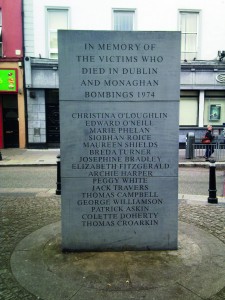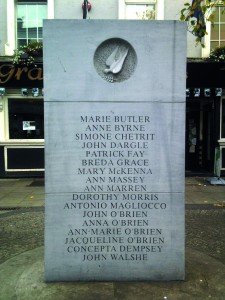‘The forgotten massacre’
Published in Features, Issue 3 (May/June 2014), Volume 22
As early as May 1975 the Irish Times noted that ‘many people seem to have forgotten that the bombings ever took place’. Over the years other atrocities, such as Bloody Sunday, Bloody Friday, Enniskillen and Omagh, have loomed far larger in the public imagination. Bombings carried out by the IRA, such as at Warrington in 1993, also saw far greater displays of public anger in Dublin than after the 1974 massacre. There was little interest from academics; the bombs are relegated to a footnote in the relevant chapter of the New History of Ireland. They are mentioned only in passing in the memoirs of Garret FitzGerald, who was minister for foreign affairs in the 1973–7 coalition. For almost twenty years commemoration was largely confined to private family gatherings. Those who demanded an investigation into the attacks were sometimes subject to Garda surveillance or regarded as IRA fellow-travellers.

Front and back of the memorial unveiled in Talbot Street in 1997, listing the names of the victims.
Years of lobbying by trade unionist Kevin Walsh eventually saw Dublin City Council organise a commemorative Mass in 1990 and unveil a small memorial near Parnell Square (since moved to Glasnevin Cemetery). A much larger memorial was unveiled in Talbot Street in 1997. By then UTV’s ‘Hidden Hand’ programme had helped to revive interest. In 1996 relatives of some of the victims formed Justice for the Forgotten, which campaigned for a public inquiry into the events.
















